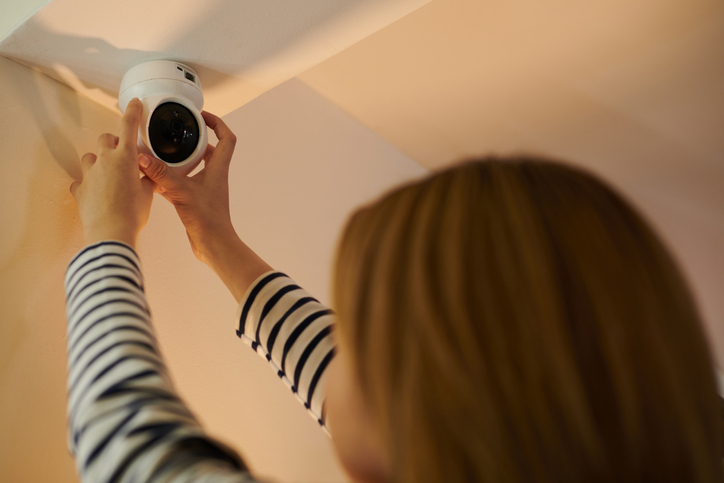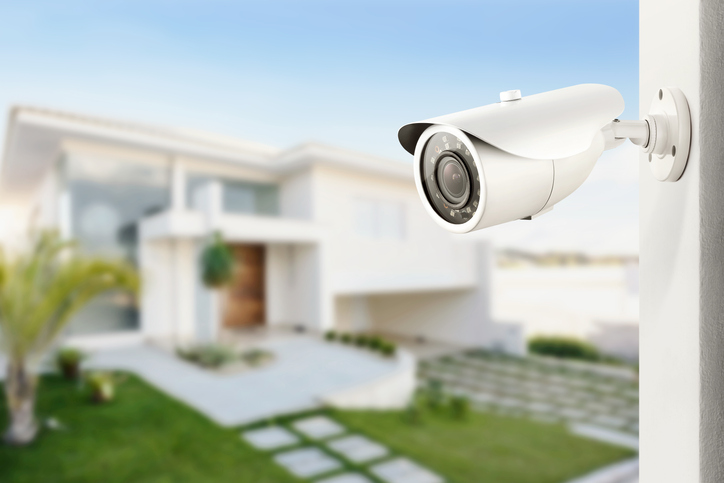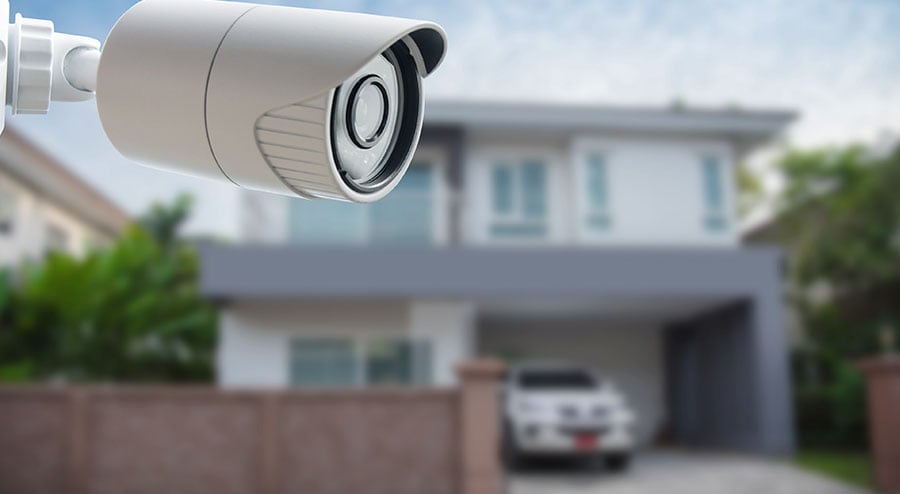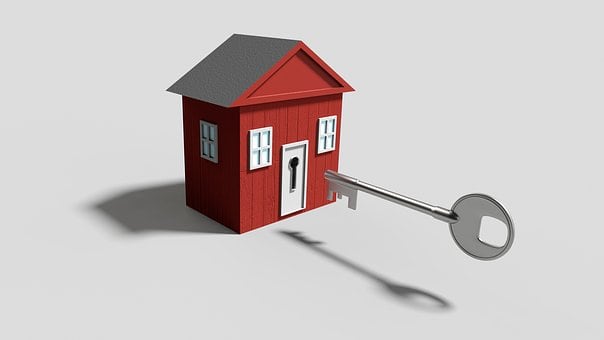Strategic camera placement is a crucial aspect of an effective home security setup, as it not only allows for comprehensive monitoring but also serves as a powerful deterrent against potential intruders and unauthorized activities. In this guide, we will delve into the key considerations for placing security cameras, including optimal angles, critical areas, weatherproofing, privacy concerns, and the integration of advanced features. By the end, you’ll be equipped with the knowledge to design a well-protected and vigilant environment that ensures safety and peace of mind for you and your loved ones.

Assessing Your Property
When it comes to placing security cameras for maximum coverage, it’s essential to strategically position them in key areas around your property. Consider placing cameras at main entry points such as front and back doors, as these are common points of entry for intruders. Additionally, cover other access points like windows and garage doors. Exterior cameras should be placed to cover the entire perimeter of your property, including side yards and alleys.
In addition to focusing on entry points, it’s crucial to cover blind spots and areas with limited visibility. These may include corners of the property, dark spots where lighting is inadequate, or areas obstructed by shrubbery. By identifying these blind spots and placing cameras to monitor them, you can eliminate potential hiding spots for intruders.
Determining The Number Of Cameras Needed
The number of cameras required for adequate perimeter coverage depends on the size and layout of your property. Conduct a thorough assessment of your property’s layout and consider the number of entry points and blind spots that need coverage. One camera may cover a small front yard, but larger properties may require multiple cameras to ensure comprehensive coverage.
Identifying Critical Areas For Camera Placement
Certain areas of your property may be more susceptible to criminal activity than others. These critical areas may include the front door, where package theft or home invasion is common, or the backyard, where intruders could attempt unauthorized entry. Identify areas with high-value items, like outdoor equipment or vehicles, that may attract thieves. By prioritizing these critical areas, you can allocate resources and ensure they are adequately monitored.
Prioritizing Entry Points For Camera Installation
Entry points are primary targets for potential intruders, making them a top priority for camera installation. Place cameras at all external doors, including front, back, side, and sliding doors. Windows on the ground floor and those accessible via fire escapes should also be considered. By placing cameras at these points, you can capture crucial footage of anyone attempting unauthorized entry into your home.
According to a study conducted by the University of North Carolina at Charlotte, visible security cameras can act as a powerful deterrent against burglaries and property crimes. The study found that properties with visible security cameras were 300% less likely to be targeted by burglars compared to properties without any surveillance measures in place.
Camera Placement Strategies
The camera angles play a crucial role in capturing clear and identifiable images, especially for facial recognition. To achieve this, cameras should be positioned at a downward angle, slightly facing the ground. This ensures that the camera captures the full height of an individual’s face as they approach. Mounting cameras too high may result in obscured faces, making it challenging to identify potential intruders. Additionally, avoid pointing cameras directly into bright light sources, as this can wash out the image and reduce visibility.
Monitoring Blind Spots And Areas With Limited Visibility
Identifying blind spots and areas with limited visibility is essential for effective camera placement. These areas are vulnerable points that intruders may exploit to avoid detection. Common blind spots include corners, alcoves, and spaces obstructed by objects or landscaping. Place cameras strategically to cover these blind spots, ensuring there are no gaps in surveillance coverage. Consider using wide-angle lenses or pan-tilt-zoom (PTZ) cameras that can be remotely adjusted to monitor these areas effectively.
Recommended Camera Heights For Various Locations
The optimal camera height varies based on the location and purpose of the camera. For entry points like doors and windows, the recommended height is around 7 to 9 feet above the ground. This height allows cameras to capture the best angle for facial recognition and minimizes the risk of tampering. In contrast, for monitoring larger areas like driveways or yards, higher mounting positions may be necessary to get a wider view.
Indoor camera heights should be adjusted based on the area being monitored. For example, in a living room or hallway, a height of 6 to 7 feet is generally suitable, while for a baby’s room, a lower height of around 3 to 4 feet may be more appropriate.
Comparing Wired And Wireless Camera Options
When considering security camera options, homeowners often encounter two primary choices: wired and wireless cameras, each with its own set of advantages and limitations. Wired cameras offer a reliable power supply through the wired connection, ensuring a consistent and stable video transmission with minimal signal interference. However, their installation can be more complex, often requiring professional assistance, and the need for wiring may limit the flexibility of camera placement. Additionally, wired cameras may be susceptible to power outages during electrical disruptions unless they are backed up by a battery or an uninterruptible power supply (UPS).
On the other hand, wireless cameras offer a more convenient installation process as they eliminate the need for extensive wiring. This makes them ideal for locations where wiring may be challenging or unsightly. The flexibility of wireless cameras allows for easy relocation and adjustments to the camera’s position as needed. Some wireless cameras are also battery-powered, providing a completely wire-free setup, which is particularly useful in areas without access to power outlets. However, it’s essential to consider the strength of the Wi-Fi signal in the areas where the cameras will be placed, as signal strength may be affected by distance from the router or obstructions.
Despite the benefits of wireless cameras, they also have their drawbacks. Reliance on Wi-Fi signal strength could potentially lead to intermittent connectivity issues, particularly in areas with weak or inconsistent Wi-Fi coverage. Battery-operated wireless cameras require periodic recharging or battery replacement, which can be a maintenance concern for some users. Additionally, the presence of other wireless devices in the vicinity could cause signal interference, affecting the camera’s performance.
When making a decision between wired and wireless cameras, it is essential to consider your specific requirements, the layout of your property, and the availability of power sources and Wi-Fi coverage. While wired cameras offer a reliable and stable solution, wireless cameras provide greater flexibility and ease of installation. Ultimately, selecting the most suitable camera option will depend on your unique security needs and preferences.
Enhancing Deterrence And Disguise
One of the most effective ways to deter potential intruders is to make security cameras clearly visible around your property. Visible cameras act as a prominent warning to would-be criminals, signaling that the property is under surveillance and any unlawful actions will be captured on camera. The mere presence of visible cameras can discourage opportunistic burglars, vandals, or trespassers from attempting unlawful activities, as they are aware of the increased risk of being identified and caught.
To maximize the deterrent effect, ensure that cameras are positioned prominently near entry points and other vulnerable areas. Placing signs indicating the presence of security cameras can further reinforce the message that the property is being monitored. Additionally, consider using dome cameras or bullet cameras with noticeable housings in high-visibility colors to make them more conspicuous.
Innovative Ways To Disguise Security Cameras
While visible cameras are effective in deterring some intruders, there may be instances where homeowners prefer to maintain a more discreet appearance for their security system. In such cases, innovative ways to disguise security cameras can be employed. Disguised cameras are designed to blend in with the surroundings, making them less noticeable to potential intruders.
Some common methods of disguising security cameras include using camera housings that resemble everyday objects like outdoor lights, birdhouses, or sprinkler heads.
You can also install cameras within fake security cameras or dummy cameras, which give the appearance of fully functioning camera systems. Camouflaging cameras amidst foliage or within outdoor decor elements is also an option.
While disguised cameras may not have the same immediate deterrent effect as visible cameras, they can be a strategic choice in specific situations where homeowners prefer a more covert approach to surveillance.
Integrating Motion Sensor Lighting For Added Deterrence
Motion sensor lighting is a valuable addition to any security camera system, enhancing deterrence during nighttime hours. Motion-activated lights turn on when triggered by movement, illuminating the area around the cameras. This sudden burst of light surprises potential intruders, drawing attention to their presence and making them feel exposed.
The combination of motion-activated lighting with visible cameras significantly increases the effectiveness of deterrence. Intruders caught in the spotlight are more likely to abandon their plans and retreat to avoid detection. Motion sensor lighting also benefits homeowners by alerting them to potential activity outside their property, allowing for immediate responses or further investigation.
Integrating motion sensor lighting with security cameras is relatively simple, and many cameras come with built-in motion detection features. Homeowners can adjust the sensitivity of the motion sensors to reduce false alarms triggered by animals or other non-threatening movements.
Minimizing False Alarms And Technical Considerations
False alarms triggered by pets or other moving objects can be a common issue with security camera systems. To minimize false alerts, it’s crucial to position cameras strategically and adjust their settings appropriately. Consider mounting cameras at a height that avoids capturing movement from pets or wildlife. Angle the cameras slightly downward to focus on the intended area and reduce the chances of capturing unnecessary motion. Additionally, use the camera’s motion detection sensitivity settings to customize the level of sensitivity based on your specific environment.
Furthermore, some advanced cameras offer “smart” motion detection technology that can distinguish between human and non-human movements, reducing false alarms. By fine-tuning the camera’s positioning and settings, homeowners can significantly minimize false alerts while ensuring the system remains responsive to potential threats.
Weatherproof Cameras For Various Climates
For outdoor security cameras, it’s essential to invest in weatherproof models designed to withstand various climatic conditions. Weatherproof cameras are typically rated with an Ingress Protection (IP) code that indicates their resistance to dust and water. The first digit in the IP code represents the camera’s resistance to solid particles, while the second digit indicates its resistance to liquids.
In regions with harsh weather conditions, such as extreme temperatures, heavy rain, or snowfall, opt for cameras with a higher IP rating, such as IP65 or IP66. These cameras can endure rain, dust, and other environmental factors without compromising their performance. Regularly check and maintain weather seals and gaskets to ensure the cameras remain fully protected from the elements.
Protecting Outdoor Cameras From Vandalism Or Theft
Outdoor security cameras are vulnerable to vandalism and theft attempts. To protect them, consider placing cameras at higher positions, out of easy reach. Installing cameras under the eaves or near lighting fixtures can make them less accessible to potential vandals. For added security, use camera mounts with tamper-resistant features and secure the camera’s power and data cables to prevent tampering.
Consider installing security camera housings made of durable materials like metal or polycarbonate, which can withstand attempts at vandalism. Additionally, choose cameras with anti-vandal features, such as impact-resistant domes, to deter and resist tampering.
Legal Considerations And Privacy Concerns For Outdoor Camera Placement
Before installing outdoor security cameras, homeowners must be aware of legal considerations and privacy concerns. Research local laws and regulations related to video surveillance, as some areas may have specific restrictions on camera placement and the recording of audio.
To respect the privacy of neighbors and passersby, avoid pointing cameras directly into public spaces or areas where individuals have a reasonable expectation of privacy, such as bedrooms or bathrooms. Consider positioning cameras to focus exclusively on your property and its immediate surroundings.
To address privacy concerns, it’s a good practice to inform neighbors about the presence of security cameras, especially if the cameras might capture some parts of their property. Displaying visible signs indicating the use of surveillance cameras can also help inform visitors and potential intruders that they are being recorded.
Ensuring Strong Wi-Fi Signal For Wireless Cameras
For wireless security cameras, ensuring a strong Wi-Fi signal is vital for consistent performance and uninterrupted connectivity. To achieve this, position the wireless router centrally within the home, away from potential signal obstacles like thick walls and electronic devices. Extending coverage with Wi-Fi range extenders or a mesh network system can enhance signal strength, especially in areas with weak connectivity. Regularly monitor the signal strength around camera locations and consider upgrading the internet plan or router if necessary. A robust Wi-Fi signal enables homeowners to access camera feeds in real-time, respond promptly to security threats, and maintain a secure home environment.
Utilizing Advanced Features And Integration
Utilizing advanced features and integration in a home security camera system elevates its capabilities to a whole new level. By leveraging innovative storage options, seamless home automation integration, and essential accessories, homeowners can optimize their security setup for enhanced protection and peace of mind.
Storage Options for Captured Footage
Choosing the right storage option for captured footage is essential for the efficient operation of a security camera system. There are several storage options available, each with its own benefits and considerations. One common method is to use a Network Video Recorder (NVR) or Digital Video Recorder (DVR), which allows footage to be recorded and stored locally on a hard drive. NVRs are commonly used with IP cameras, while DVRs are compatible with analog cameras.
Alternatively, cloud-based storage solutions are becoming increasingly popular. With cloud storage, footage is securely stored offsite in remote servers, accessible from anywhere with an internet connection. This option provides greater flexibility, scalability, and protection against data loss in case of camera damage or theft.
When choosing a storage option, consider factors such as the amount of storage space needed, the desired level of accessibility, and budgetary constraints. Regularly reviewing and managing stored footage is crucial to ensure that the system is continuously recording and saving essential video data.
Integrating Security Camera System With Home Automation
Integrating a security camera system with a home automation setup can significantly enhance home security and convenience. Through integration, homeowners can access camera feeds and manage their security system through a single centralized platform or mobile app. This seamless integration allows for real-time monitoring, remote access, and control of the security cameras.
Home automation integration offers various benefits, such as the ability to receive instant alerts and notifications on a smartphone or other connected devices when the cameras detect motion or potential security breaches. Homeowners can also set up automated actions, such as turning on lights or activating sirens when suspicious activity is detected, effectively deterring intruders.
Integration with smart home devices, such as smart locks or doorbells, enables additional security features and allows homeowners to see and interact with visitors remotely. By leveraging the power of home automation, homeowners can create a comprehensive and interconnected security ecosystem for their property.
Accessory Recommendations For Improved Camera Performance
To maximize the performance and functionality of security cameras, there are several accessory recommendations that homeowners should consider. These accessories play a crucial role in enhancing the overall efficiency and reliability of the camera system. Camera mounts and brackets provide secure and adjustable positioning, ensuring optimal coverage of the monitored areas. Infrared illuminators are particularly useful for low-light or nighttime surveillance, as they offer additional illumination to capture clearer video footage in challenging lighting conditions.
Power over Ethernet (PoE) switches are an excellent option for IP cameras, streamlining the installation process by combining data and power transmission over a single cable. This eliminates the need for separate power cables, simplifying setup and reducing clutter. Surge protectors are essential accessories that safeguard cameras from power surges and potential electrical damage during storms or voltage fluctuations, thereby extending the lifespan of the equipment.
Optimal Distance Between Cameras For Effective Coverage
Determining the optimal distance between cameras is critical for achieving comprehensive coverage of the property. The distance between cameras will depend on factors such as the camera’s field of view, resolution, and the specific layout of the property.
For outdoor cameras, it’s essential to ensure there are no gaps in coverage and that cameras overlap slightly to avoid blind spots. The ideal distance may vary based on the camera’s resolution and lens capabilities. High-resolution cameras can capture more detail at greater distances, allowing for fewer cameras to cover larger areas.
For indoor cameras, strategic placement is crucial to monitor high-traffic areas, entry points, and valuable assets. Consider the camera’s field of view and angle of coverage to maximize the area captured by each camera.
Installing Indoor Cameras Strategically
When installing indoor cameras, homeowners should focus on strategic placement to maximize coverage while respecting privacy boundaries. Common locations for indoor cameras include entryways, hallways, living rooms, and areas with valuable belongings.
Ensure that cameras are positioned at angles that avoid capturing private spaces like bedrooms and bathrooms. Consider mounting cameras high on walls or ceilings to prevent tampering and maintain an unobtrusive presence.
Additionally, indoor cameras can be integrated with smart home devices to enhance functionality. For instance, connecting indoor cameras with smart speakers allows users to access camera feeds using voice commands.
Strategic installation of indoor cameras provides peace of mind by monitoring critical areas and helping homeowners keep a watchful eye on their property’s interior while preserving privacy for household members.
Security And Maintenance
Safeguarding security camera systems from hacking and unauthorized access is of paramount importance to protect the privacy and security of the property and its occupants. As security cameras become more interconnected through the internet and home networks, they can become potential targets for cybercriminals. To prevent unauthorized access, it is essential to implement robust security measures.
First and foremost, ensure that strong, unique passwords are set for each camera and the central management system. Avoid using default or easily guessable passwords, and make it a practice to change them regularly. Additionally, enabling Two-Factor Authentication (2FA) adds an extra layer of security, requiring a secondary code or verification method to access the camera system, even with the correct password.
Keeping the camera’s firmware and software up-to-date is crucial. Manufacturers often release updates that address vulnerabilities and improve system security. Regularly checking for and applying these updates helps safeguard against potential security breaches.
Securing the home network is equally important. Use strong encryption (WPA2 or WPA3) and a secure Wi-Fi password. If possible, isolate the camera system on a separate network to limit potential access points for hackers.
Consider disabling remote viewing if it is not essential for your needs, as this can further minimize potential risks of unauthorized access. Configuring firewalls on routers or network devices helps restrict incoming and outgoing traffic to the camera system, adding an extra layer of protection.
Periodically audit the camera system’s access logs and user accounts to identify any suspicious activities or unauthorized access attempts. By implementing these proactive security measures and adhering to recommended practices, homeowners can significantly reduce the risk of their security camera system falling victim to hacking or unauthorized access, ensuring the system remains a secure and reliable defense against potential threats.
Recommended Maintenance Practices For Reliable Camera Function
Regular maintenance is essential to ensure the reliable function of security cameras and to optimize the overall effectiveness of the system. By performing routine maintenance tasks, homeowners can extend the lifespan of the cameras and minimize downtime, ensuring that the system remains a dependable tool for home security. Several recommended maintenance practices contribute to the optimal performance of the camera system.
Firstly, regular cleaning and inspection of camera lenses and housings are necessary to remove dust, dirt, or debris that may accumulate over time. Keeping the lenses clean ensures clear and sharp video footage, while inspecting the physical condition of the cameras helps identify any signs of wear and tear or damage.
Periodically testing the functionality of each camera is crucial to ensure that all features, such as pan, tilt, zoom (PTZ), and infrared capabilities, are working correctly. Testing also verifies that the camera is capturing clear video footage without any technical issues.
Checking the power sources of the cameras is essential to ensure that they are receiving adequate power and that all power connections are secure. For battery-operated cameras, regular checks should be made to assess their charge level or consider battery replacement as needed.
Monitoring storage capacity is vital, particularly for systems with local recorders or cloud storage platforms. Ensuring sufficient storage space is available is essential to accommodate the video footage based on the chosen recording settings.
Inspecting cables and connections regularly helps detect any signs of damage or looseness. Securing cables effectively prevents accidental disconnections, maintaining the cameras’ functionality.
Periodically reviewing camera angles and coverage is necessary to ensure that all critical areas are adequately monitored. Adjusting camera positioning as needed helps address any blind spots or changes in the property layout that may have occurred over time.
Proper lighting is essential for camera performance, especially for outdoor cameras during nighttime surveillance. Ensuring that camera areas have adequate lighting or adding additional lighting or infrared illuminators improves video quality in low-light conditions.
By adhering to these recommended maintenance practices, homeowners can ensure that their security camera system functions optimally and remains a reliable tool in safeguarding their property. Regular maintenance minimizes the risk of technical issues and maximizes the system’s ability to provide real-time monitoring and surveillance, reinforcing the overall security of the home.
Conclusion
Home security camera placement is a critical aspect of creating a robust and effective security system. By strategically positioning cameras to maximize coverage, homeowners can enhance their ability to monitor and protect their property effectively. Considering factors such as deterrence, camera angles, weatherproofing, and privacy concerns contributes to creating a comprehensive security solution that deters potential intruders and provides peace of mind. Integrating advanced features, such as cloud storage, home automation, and motion sensor lighting, further enhances the system’s capabilities. Regular maintenance and security measures, along with proper camera positioning, ensure reliable performance and safeguard against potential threats, making home security cameras an invaluable asset in safeguarding both property and loved ones. With careful planning and attention to detail, homeowners can create a secure environment that deters unwanted activities and provides a sense of safety and protection for their household.




